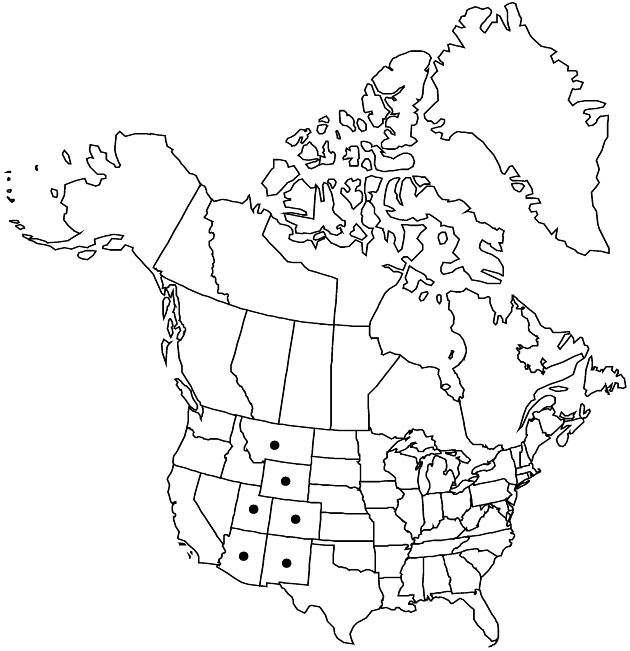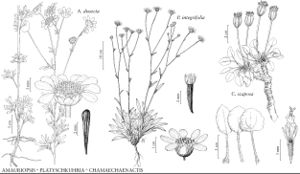Platyschkuhria integrifolia
Bull. Torrey Bot Club 33: 155. 1906.
Leaf blades 2–10 cm × 5–35+ mm. Involucres 9–12+ × 12–25+ mm. Ray corolla laminae 6–16 mm. Disc corollas 3–6(–7) mm. Cypselae (1–)3–5(–8) mm; pappi 0.6–3+ mm. 2n = 24, 48, 60, 72.
Phenology: Flowering May–Jul.
Habitat: Seleniferous clays, shaley slopes
Elevation: 1100–2200 m
Distribution

Ariz., Colo., Mont., N.Mex., Utah, Wyo.
Discussion
Specimens of Platyschkuhria integrifolia with stems leafy over 3/4+ of their lengths have been called var. oblongifolia (mostly from “four-corners” area of Arizona, Colorado, New Mexico, and Utah). Those with leaves mostly on proximal 1/10–3/4 their stem lengths, peduncles little or not at all stipitate-glandular, and phyllary tips ± caudate have been called var. ourolepis (mostly from Uinta Basin, Utah). Those with leaves mostly on proximal 1/10–3/4 their stem lengths, leaf blades widest beyond their middles and rounded at tips, peduncles ± stipitate-glandular, and phyllary tips acute to acuminate have been called var. nudicaulis (mostly from Montana and Wyoming). Those with leaves mostly on proximal 1/10–3/4 their stem lengths, leaf blades widest proximal to their middles and acute at tips, peduncles ± stipitate-glandular, and phyllary tips obtuse to acute or acuminate have been called var. desertorum (mostly from western Colorado and eastern Utah).
Selected References
None.
